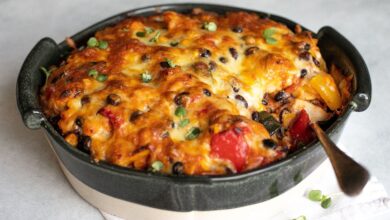Pizza Dough
Pizza Dough

Dive into the world of pizza making with our comprehensive pizza dough overview. Whether you’re a novice or an experienced home chef, this guide will equip you with the knowledge and techniques needed to create the perfect pizza crust from scratch. From selecting the right flour to mastering the art of kneading and fermentation, we’ll walk you through each step to ensure your dough rises to perfection. Explore different recipes and variations, from classic Neapolitan to crispy thin-crust styles, and learn tips for achieving the ideal texture and flavor. With our pizza dough overview, you’ll be well on your way to crafting restaurant-quality pizzas in the comfort of your own kitchen.
- All-purpose flour: Provides the base for the dough and contributes to the structure and texture.
- Active dry yeast: Leavening agent that helps the dough rise and develop air pockets.
- Warm water: Activates the yeast and helps to hydrate the flour.
- Olive oil: Adds flavor and helps to keep the dough tender.
- Salt: Enhances the flavor of the dough and regulates the yeast activity.
- Sugar or honey (optional): Provides food for the yeast to help it activate and ferment the dough.
- Cornmeal or semolina flour (for dusting): Helps prevent the dough from sticking to the surface during shaping and baking.
These basic ingredients form the foundation of pizza dough, though variations may include additional ingredients such as herbs, spices, or alternative flours for different flavor profiles and textures.

Pizza Dough Variations:
- Rustic Platter: Serve the rolled-out pizza dough on a rustic wooden board or a decorative serving platter to create an inviting presentation.
- Individual Pizza Stations: Set up a DIY pizza station with various toppings and sauces so guests can customize their pizzas according to their preferences. Provide individual portions of dough for each person to shape and top their own pizzas.
- Pizza Peel: Transfer the topped pizza dough onto a pizza peel dusted with cornmeal or semolina flour for easy sliding onto a preheated pizza stone or baking sheet in the oven. This method also adds a professional touch to your pizza-making process.
- Garnish with Fresh Herbs: After baking, sprinkle the hot pizza with freshly chopped herbs such as basil, parsley, or cilantro to add a pop of color and freshness to the finished dish.
- Drizzle with Olive Oil: Just before serving, drizzle the hot pizza with high-quality extra virgin olive oil for added flavor and richness. You can also infuse the olive oil with garlic or herbs for an extra burst of flavor.
- Slice and Serve: Use a sharp pizza cutter or knife to slice the pizza into wedges or squares, depending on your preference. Serve the slices on individual plates or on a communal platter for sharing.
- Pair with Dipping Sauces: Serve the pizza alongside a variety of dipping sauces such as marinara, pesto, garlic aioli, or balsamic reduction for added flavor and versatility.
- Accompany with Salad: Pair the pizza with a crisp green salad dressed with vinaigrette or creamy dressing to balance the richness of the pizza and add a refreshing element to the meal.
- Dessert Pizza: For a sweet twist, use the pizza dough as a base for a dessert pizza topped with Nutella, sliced fruit, caramel sauce, or chocolate chips. Cut into smaller portions and serve as a delightful sweet treat.
- Enjoy Freshly Baked: Pizza is best enjoyed hot and fresh out of the oven, so serve immediately to ensure that the crust remains crispy and the toppings are still piping hot.
By incorporating these presentation and serving suggestions, you can elevate your pizza dough from a simple base to a delicious and visually appealing dish that’s perfect for any occasion.




